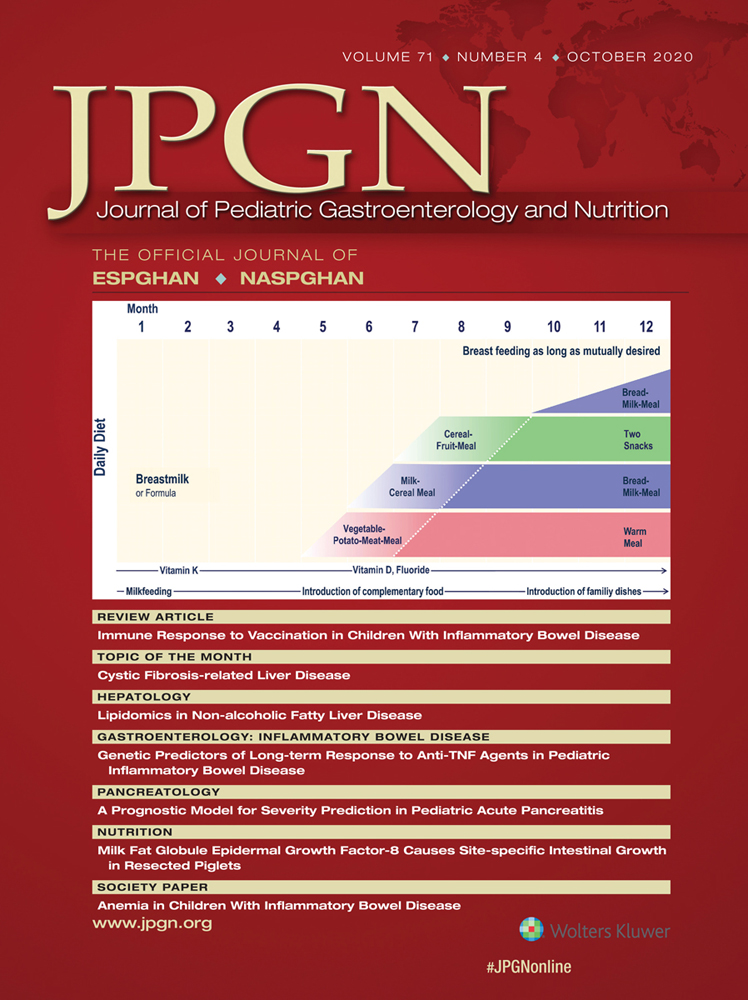Vedolizumab Trough Levels in Children With Anti-Tumor Necrosis Factor Refractory Inflammatory Bowel Disease
Drs Martine A. Aardoom and Maria M.E. Jongsma should be considered joint first authors.
Conflicts of interest: L.d.R. reports grants from ECCO and Pfizer and received consultancy fees from Abbvie, Celltrion, Malinckrodt, and Nestle outside the submitted work. J.C.E. received research support from MSD and Pfizer and consultancy fees from Janssen and Abbvie. The remaining authors report no conflicts of interest.
Supplemental digital content is available for this article. Direct URL citations appear in the printed text, and links to the digital files are provided in the HTML text of this article on the journal's Web site (www.jpgn.org).
ABSTRACT
Objectives:
Inflammatory bowel disease (IBD) can be successfully treated with vedolizumab. Studies in adult IBD patients have shown that differences in response to vedolizumab may be related to variability in vedolizumab trough levels, but in children with pediatric-onset IBD data regarding vedolizumab trough levels are not available. Thus far, the role of trough levels in pediatric-onset IBD treatment remains unclear. We aimed to investigate predictors of vedolizumab trough levels in pediatric-onset IBD patients.
Methods:
Data from anti-tumor necrosis factor refractory pediatric-onset IBD patients who received vedolizumab were collected retrospectively. Vedolizumab trough levels were measured in serum samples collected before each infusion. A linear mixed model was conducted to analyze factors that influence trough levels.
Results:
Twenty-six pediatric-onset IBD patients (14 ulcerative colitis [UC]), 9 Crohn Disease [CD], 3 IBD-unclassified [IBD-U]) received 258 vedolizumab infusions. Mean vedolizumab trough level at week 6 was 29.9 μg/mL (SD 17.8), and 11.5 μg/mL (SD 4.9) during maintenance therapy. CD patients had significantly lower trough levels than IBD-U patients (β 15.2; 95% confidence interval [CI] −1.1 to 29.2; P = 0.036). Higher fecal calprotectin (β −0.009; 95% CI −0.02 to −0.003; P = 0.007) and C-reactive protein levels (β −0.4; 95% CI −0.72 to −0.04; P = 0.027) were associated with lower trough levels, whereas shortening of time between infusions led to higher trough levels (β −0.77; 95% CI −0.9 to 0.64; P < 0.001).
Conclusions:
In this group of pediatric-onset IBD patients, trough levels were significantly lower in CD patients compared with UC/IBD-U patients. Higher levels of inflammatory markers were associated with lower vedolizumab trough levels.




